Abstract
1. The neuromuscular blocking activities of AH 5183 (2-(4-phenylpiperidino) cyclohexanol) and its N-methyl quaternary analogue (AH 5954) were compared in rapidly stimulated nerve-skeletal muscle preparations of the rat, chicken and cat.
2. The evidence indicated that in isolated preparations the neuromuscular block produced by both AH 5183 and AH 5954 was primarily pre-junctional in origin. That produced by AH 5954 was readily reversible either by washing the tissue or by reducing the stimulation frequency, whereas that produced by AH 5183 was difficult to reverse in these ways.
3. Low doses of AH 5954 sensitized the rat hemidiaphragm preparation to the neuromuscular blocking action of choline. The neuromuscular block produced by choline was reversible by tetraethylammonium but not by neostigmine. This suggested that the blocking action of choline is at least partly pre-junctional in nature.
4. In anaesthetized cats AH 5954 possessed a biphasic neuromuscular blocking action. The initial phase was rapid in onset, suggestive of a post-junctional action, whereas the second phase was prolonged and reversible by choline, suggestive of a prejunctional inhibitory action on the choline transport mechanism. AH 5183 produced no initial blocking action and was irreversible by choline.
5. Both AH 5183 and AH 5954 possessed local anaesthetic and α-adrenoceptor blocking actions. These actions and the neuromuscular blocking action were affected to different degrees by quaternization, suggesting that the three main actions of the two drugs are independent.
6. It was concluded that AH 5954 and AH 5183 act at different pre-junctional sites at the neuromuscular junction, AH 5954 acting extraneuronally by inhibiting choline transport and AH 5183 intraneuronally at the level of the synaptic vesicle membrane.
Full text
PDF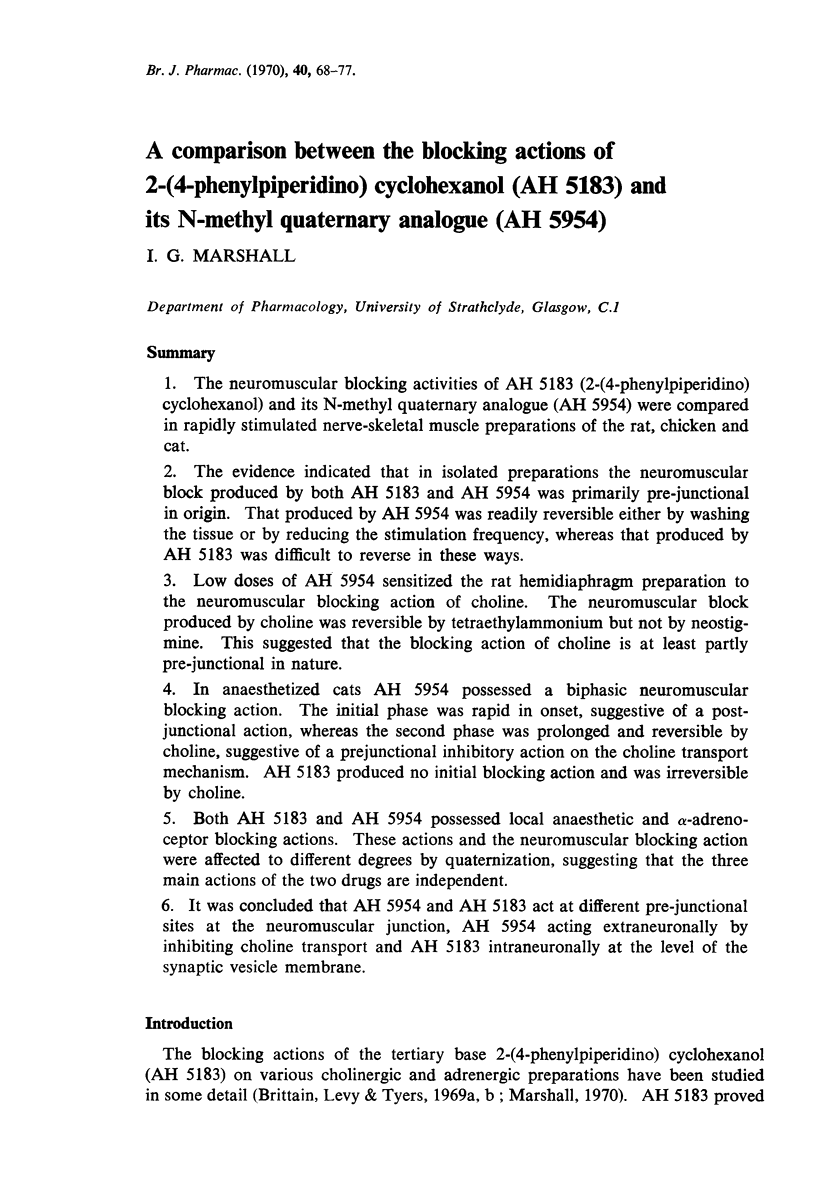
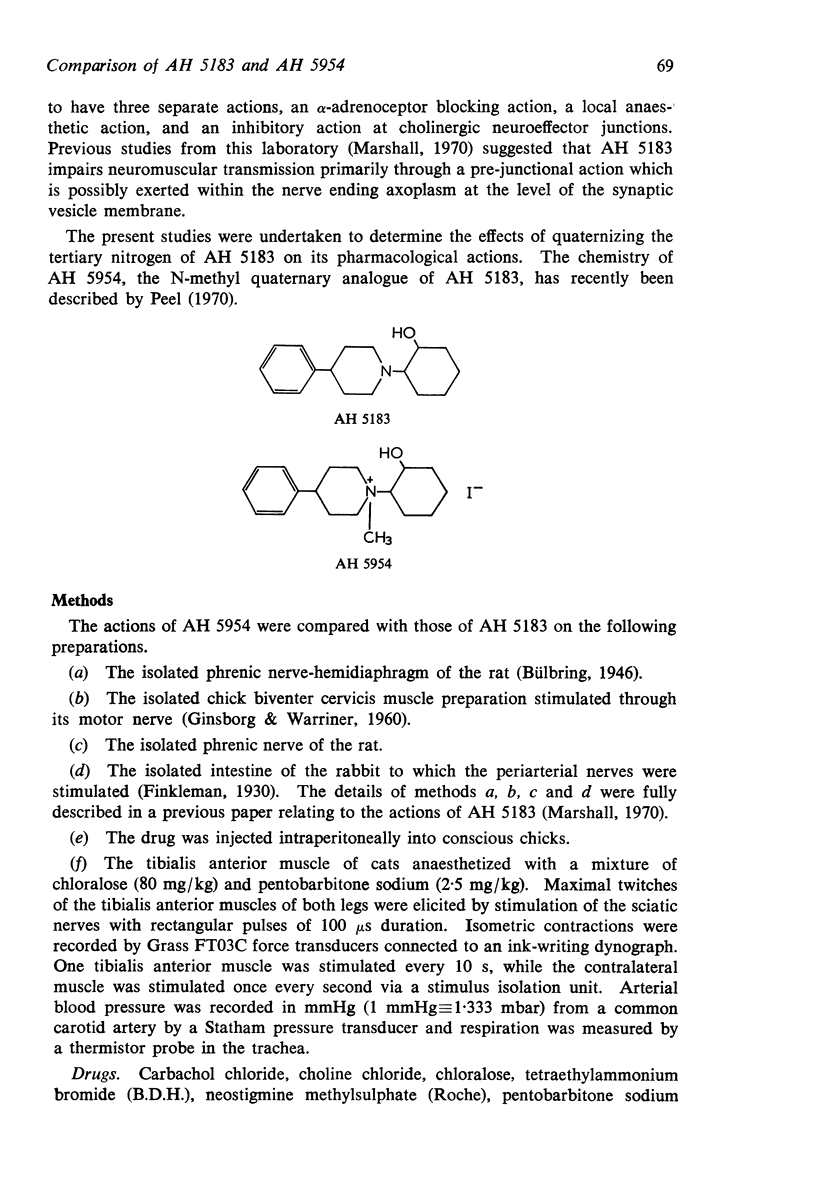
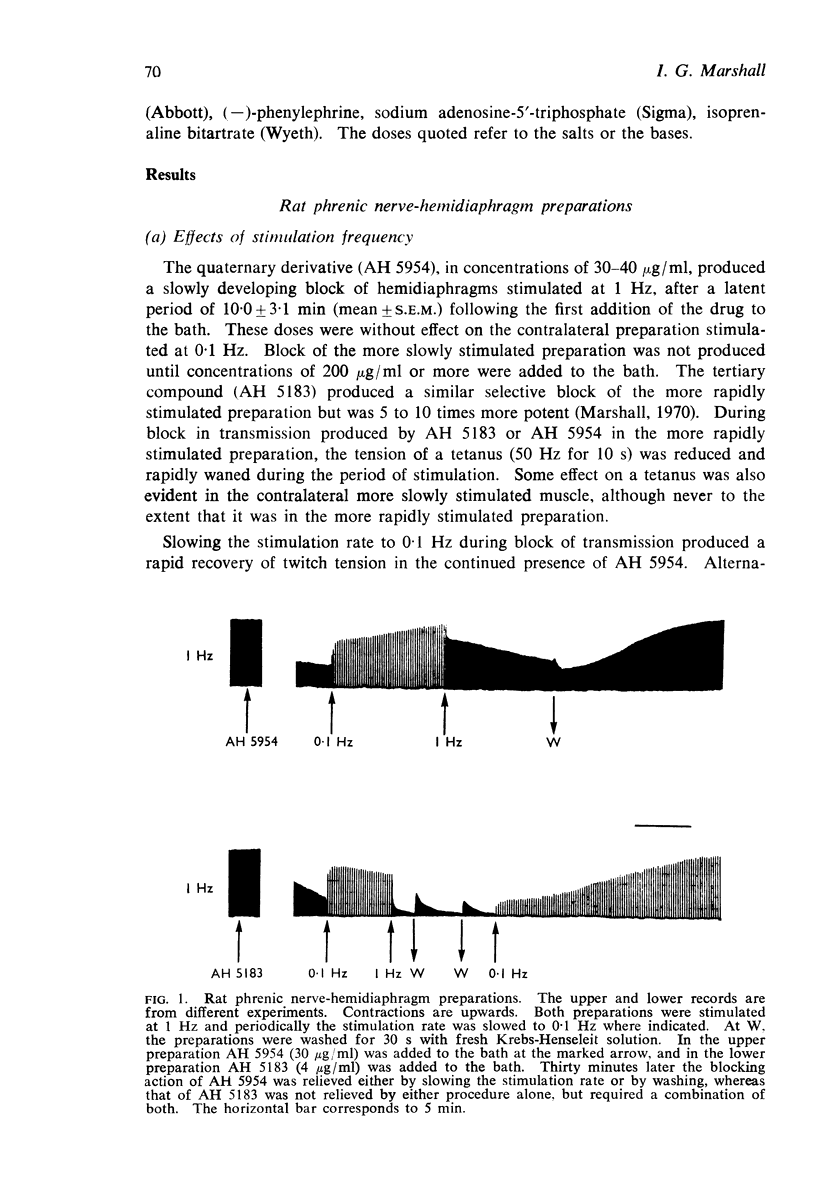
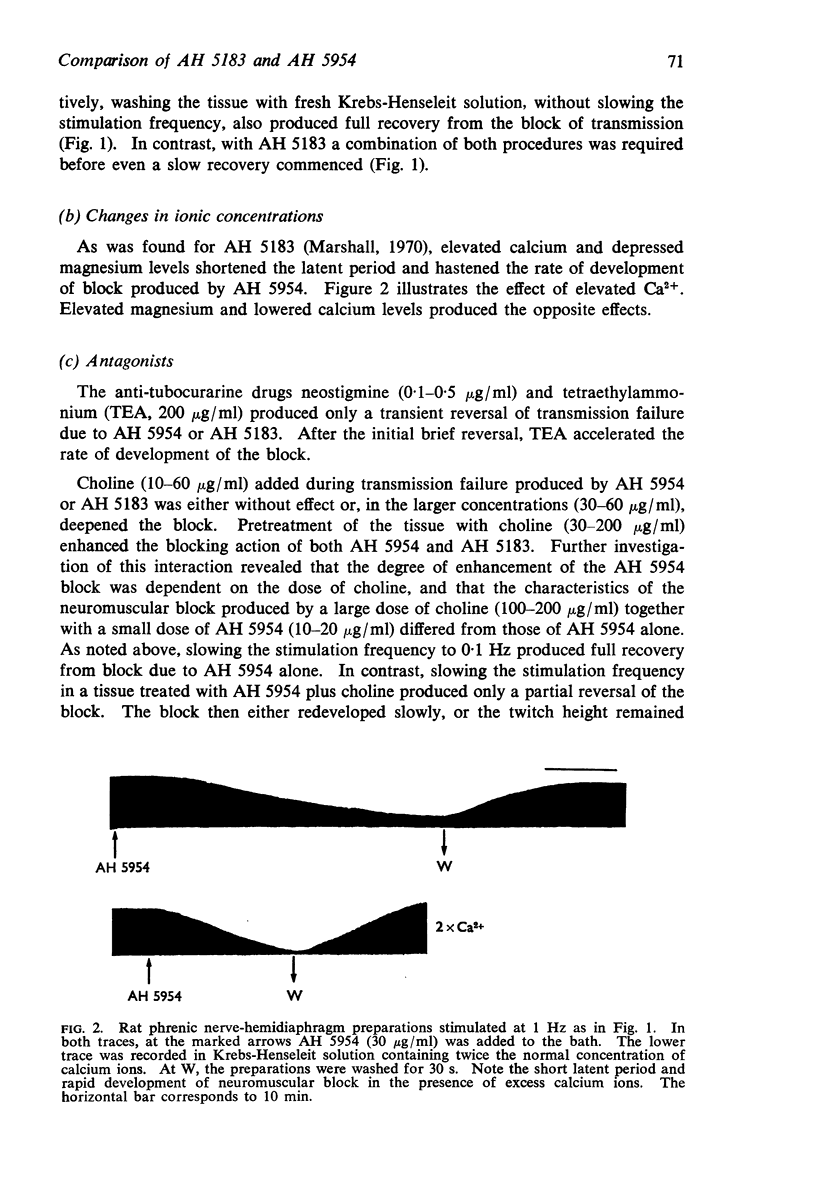
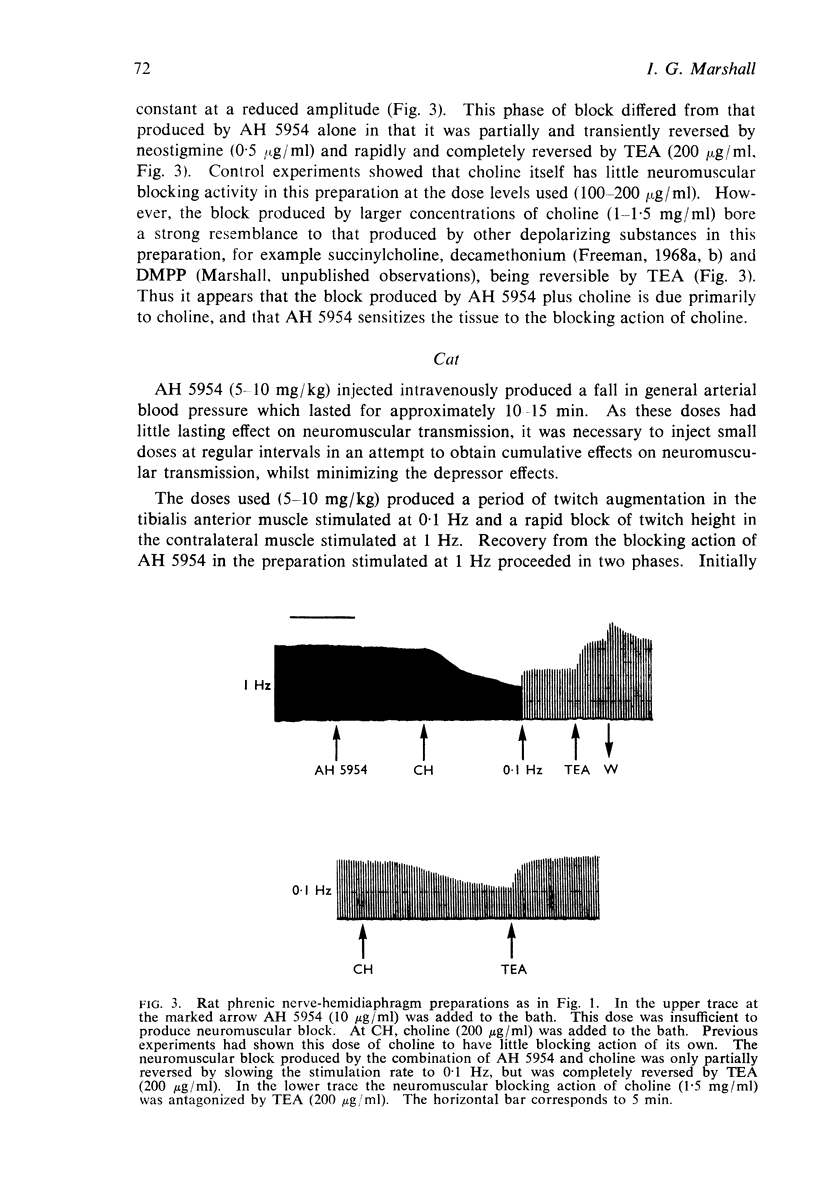
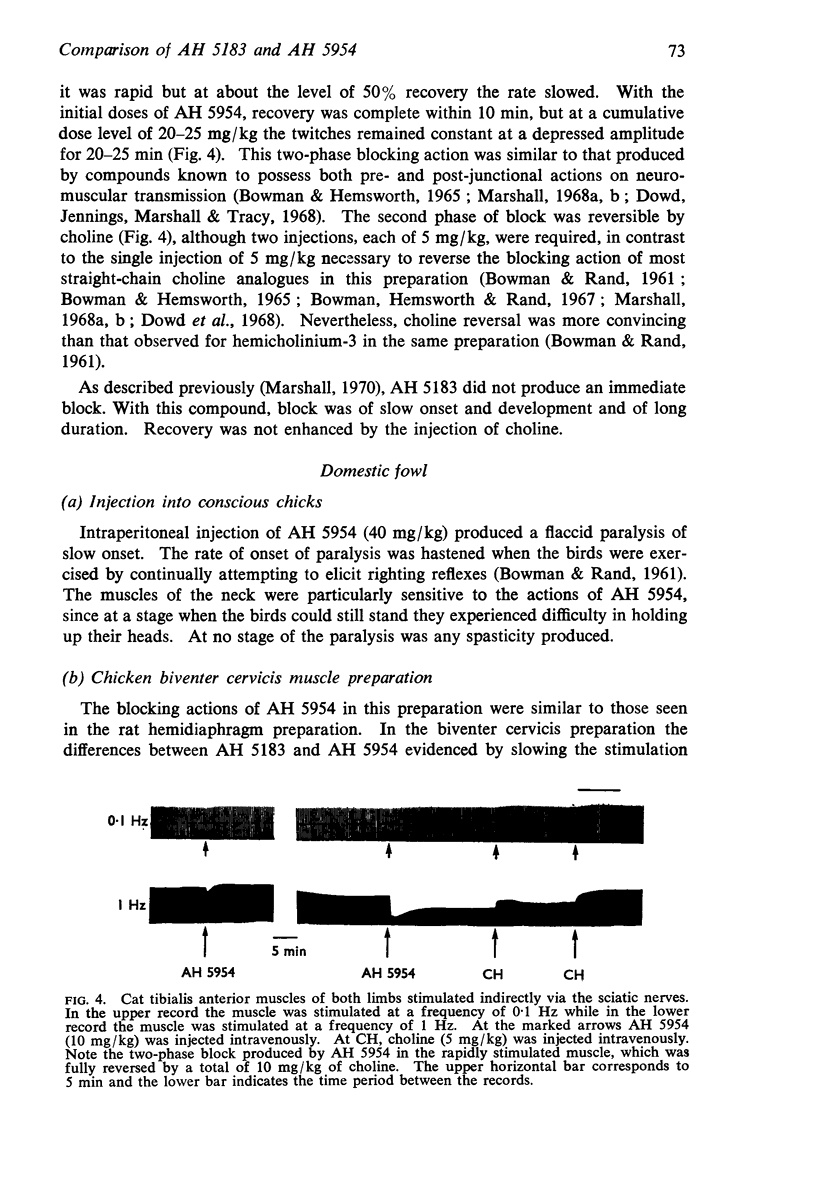
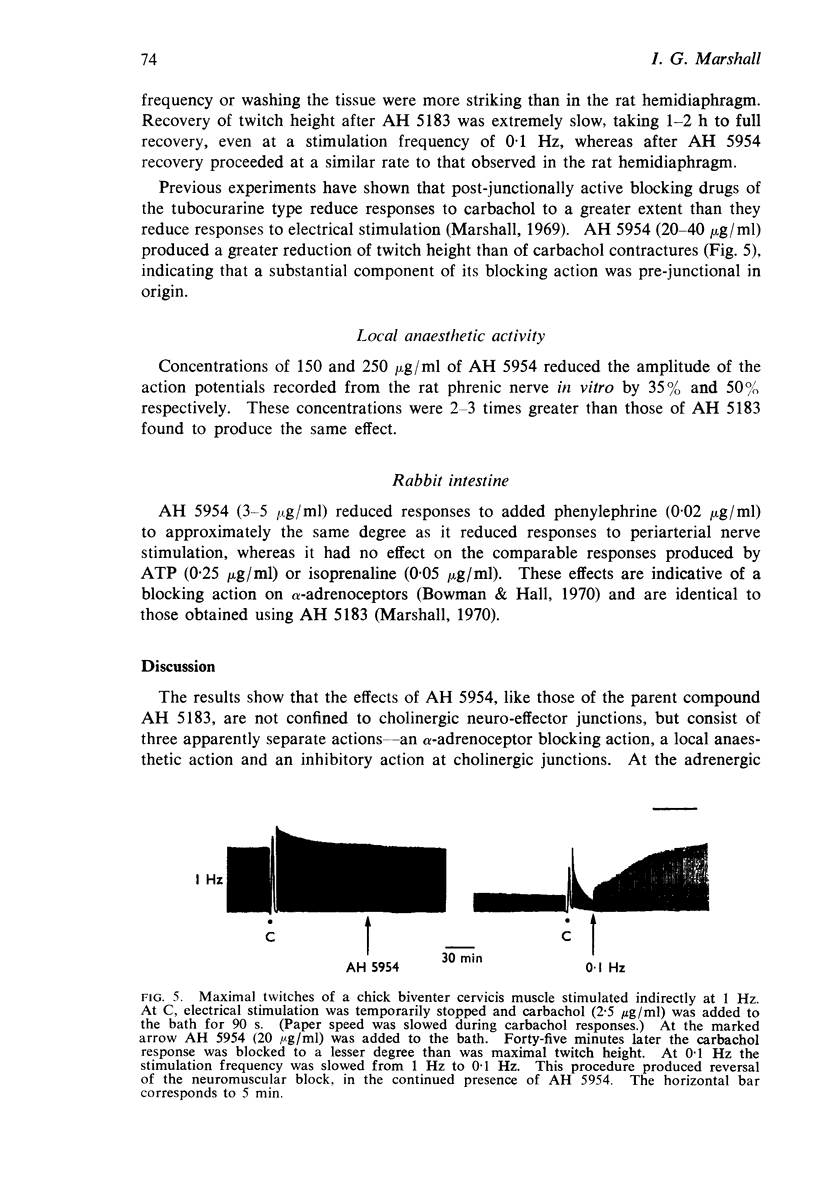
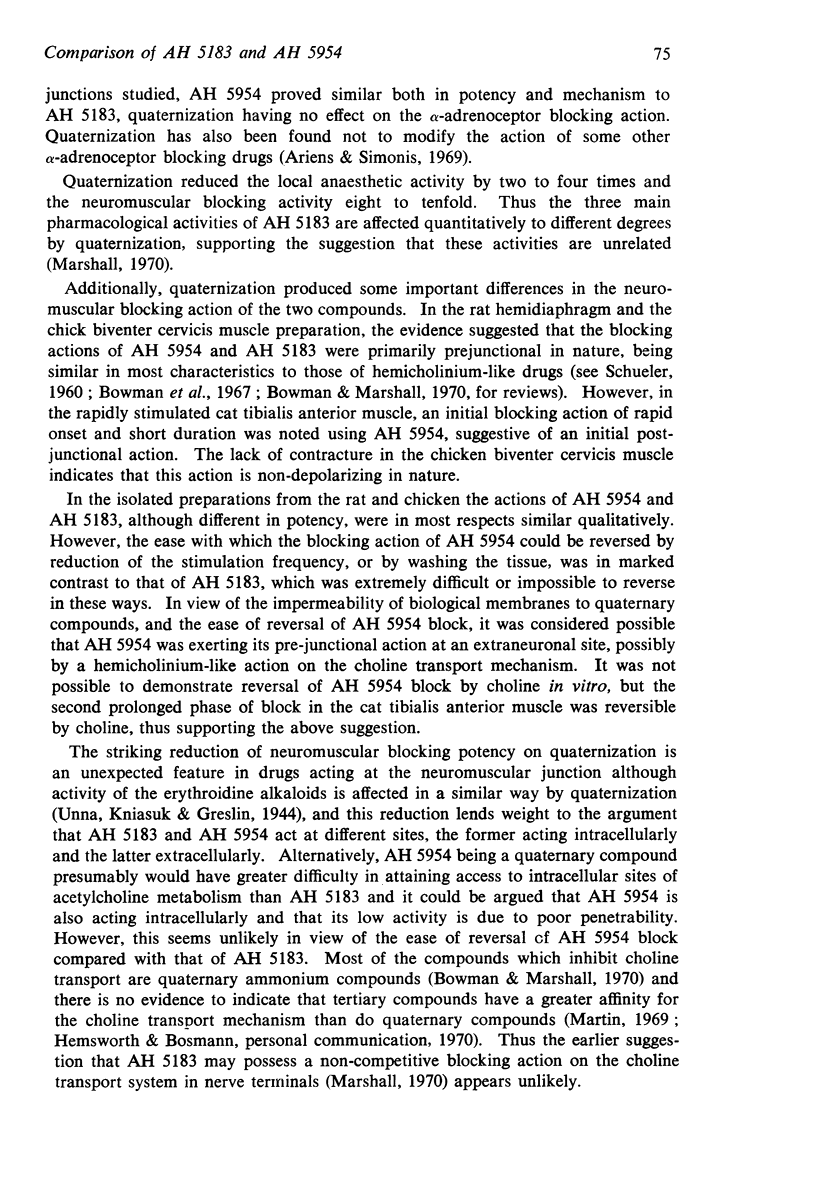
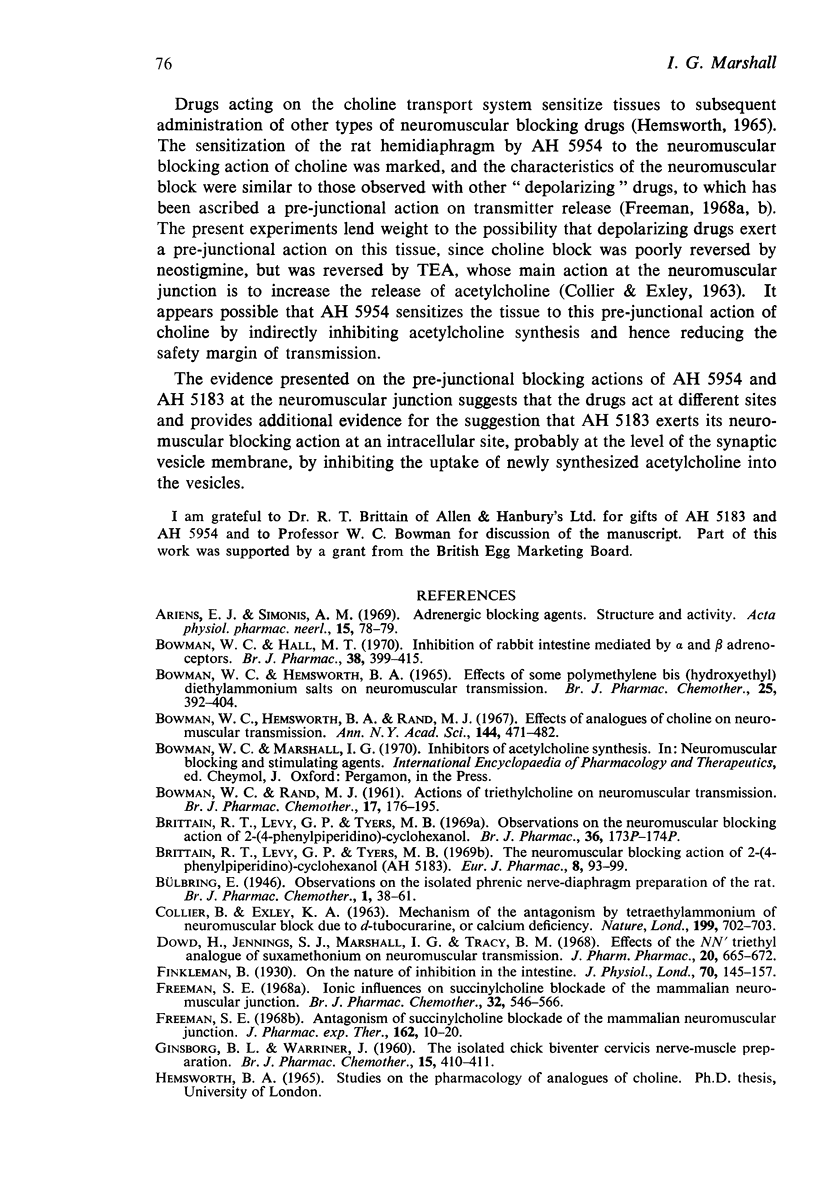
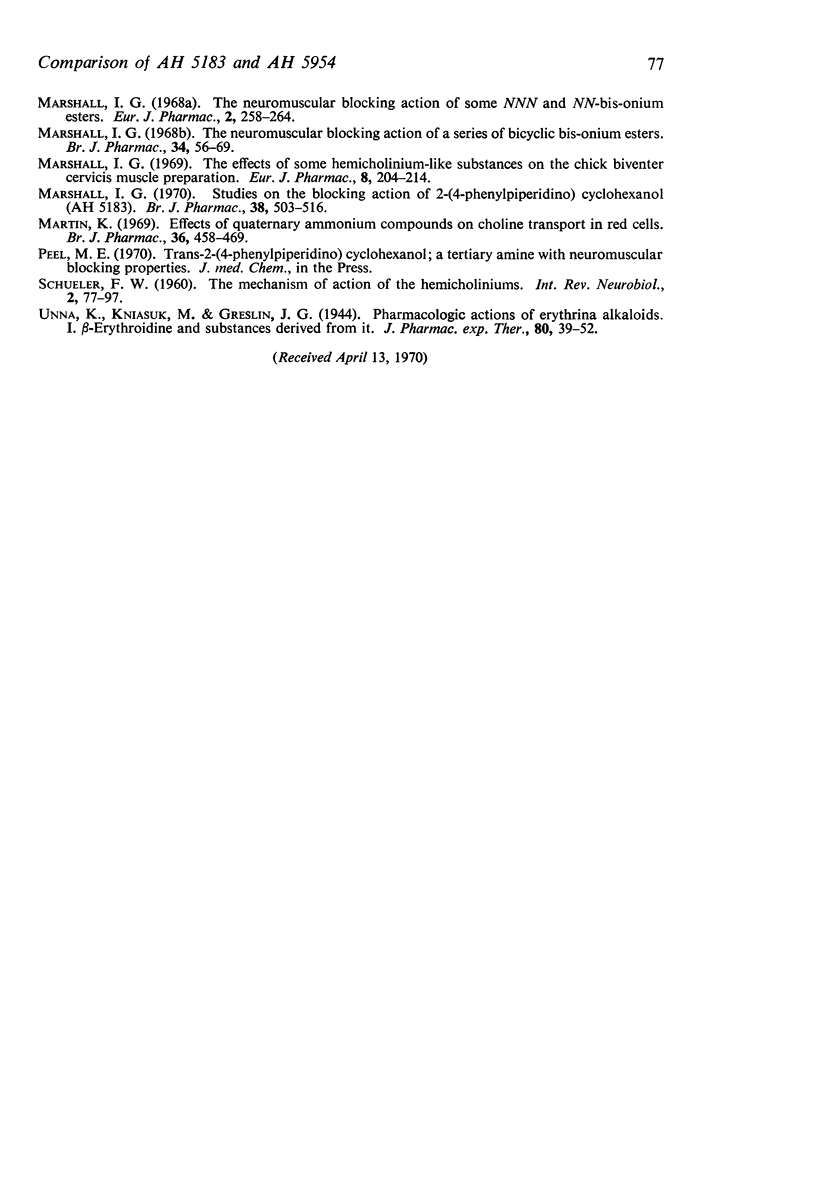
Selected References
These references are in PubMed. This may not be the complete list of references from this article.
- BOWMAN W. C., RAND M. J. Actions of triethylcholine on neuromuscular transmission. Br J Pharmacol Chemother. 1961 Oct;17:176–195. doi: 10.1111/j.1476-5381.1961.tb01278.x. [DOI] [PMC free article] [PubMed] [Google Scholar]
- Bowman W. C., Hall M. T. Inhibition of rabbit intestine mediated by alpha- and beta-adrenoceptors. Br J Pharmacol. 1970 Feb;38(2):399–415. doi: 10.1111/j.1476-5381.1970.tb08528.x. [DOI] [PMC free article] [PubMed] [Google Scholar]
- Bowman W. C., Hemsworth B. A. Effects of some polymethylene bis(hydroxyethyl)dimethylammonium salts on neuromuscular transmission. Br J Pharmacol Chemother. 1965 Oct;25(2):392–404. doi: 10.1111/j.1476-5381.1965.tb02058.x. [DOI] [PMC free article] [PubMed] [Google Scholar]
- Brittain R. T., Levy G. P., Tyers M. B. Observations on the neuromuscular blocking action of 2-(4-phenylpiperidino)-cyclohexanol (AH 5183). Br J Pharmacol. 1969 May;36(1):173P–174P. [PMC free article] [PubMed] [Google Scholar]
- Brittain R. T., Levy G. P., Tyers M. B. The neuromuscular blocking action of 2-(4-phenylpiperidino) cyclohexanol (AH 5183). Eur J Pharmacol. 1969 Oct;8(1):93–99. doi: 10.1016/0014-2999(69)90133-2. [DOI] [PubMed] [Google Scholar]
- COLLIER B., EXLEY K. A. MECHANISM OF THE ANTAGONISM BY TETRAETHYLAMMONIUM OF NEUROMUSCULAR BLOCK DUE TO D-TUBOCURARINE OR CALCIUM DEFICIENCY. Nature. 1963 Aug 17;199:702–703. doi: 10.1038/199702a0. [DOI] [PubMed] [Google Scholar]
- Dowd H., Jennings S. J., Marshall I. G., Tracy B. M. Effects of the NN'-triethyl analogue of suxamethonium on neuromuscular transmission. J Pharm Pharmacol. 1968 Sep;20(9):665–672. doi: 10.1111/j.2042-7158.1968.tb09836.x. [DOI] [PubMed] [Google Scholar]
- Finkleman B. On the nature of inhibition in the intestine. J Physiol. 1930 Sep 18;70(2):145–157. doi: 10.1113/jphysiol.1930.sp002683. [DOI] [PMC free article] [PubMed] [Google Scholar]
- Freeman S. E. Antagonism of succinylcholine blockade of the mammalian neuromuscular junction. J Pharmacol Exp Ther. 1968 Jul;162(1):10–20. [PubMed] [Google Scholar]
- Freeman S. E. Ionic influences on succinylcholine blockade of the mammalian neuromuscular junction. Br J Pharmacol Chemother. 1968 Mar;32(3):546–566. doi: 10.1111/j.1476-5381.1968.tb00455.x. [DOI] [PMC free article] [PubMed] [Google Scholar]
- GINSBORG B. L., WARRINER J. The isolated chick biventer cervicis nerve-muscle preparation. Br J Pharmacol Chemother. 1960 Sep;15:410–411. doi: 10.1111/j.1476-5381.1960.tb01264.x. [DOI] [PMC free article] [PubMed] [Google Scholar]
- Marshall I. G. Studies on the blocking action of 2-(4-phenyl piperidino) cyclohexanol (AH5183). Br J Pharmacol. 1970 May;38(3):503–516. doi: 10.1111/j.1476-5381.1970.tb10592.x. [DOI] [PMC free article] [PubMed] [Google Scholar]
- Marshall I. G. The effects of some hemicholinium-like substances on the chick biventer cervicis muscle preparation. Eur J Pharmacol. 1969 Nov;8(2):204–214. doi: 10.1016/0014-2999(69)90078-8. [DOI] [PubMed] [Google Scholar]
- Marshall I. G. The neuromuscular blocking action of a series of bicyclic bis-oniu esters. Br J Pharmacol. 1968 Sep;34(1):56–69. doi: 10.1111/j.1476-5381.1968.tb07950.x. [DOI] [PMC free article] [PubMed] [Google Scholar]
- Marshall I. G. The neuromuscular blocking action of some NNN-tris and NN-bis-onium esters. Eur J Pharmacol. 1968 Feb;2(4):258–264. doi: 10.1016/0014-2999(68)90075-7. [DOI] [PubMed] [Google Scholar]
- Martin K. Effects of quaternary ammonium compounds on choline transport in red cells. Br J Pharmacol. 1969 Jul;36(3):458–469. doi: 10.1111/j.1476-5381.1969.tb08002.x. [DOI] [PMC free article] [PubMed] [Google Scholar]
- SCHUELER F. W. The mechanism of action of the hemicholiniums. Int Rev Neurobiol. 1960;2:77–97. doi: 10.1016/s0074-7742(08)60120-8. [DOI] [PubMed] [Google Scholar]


